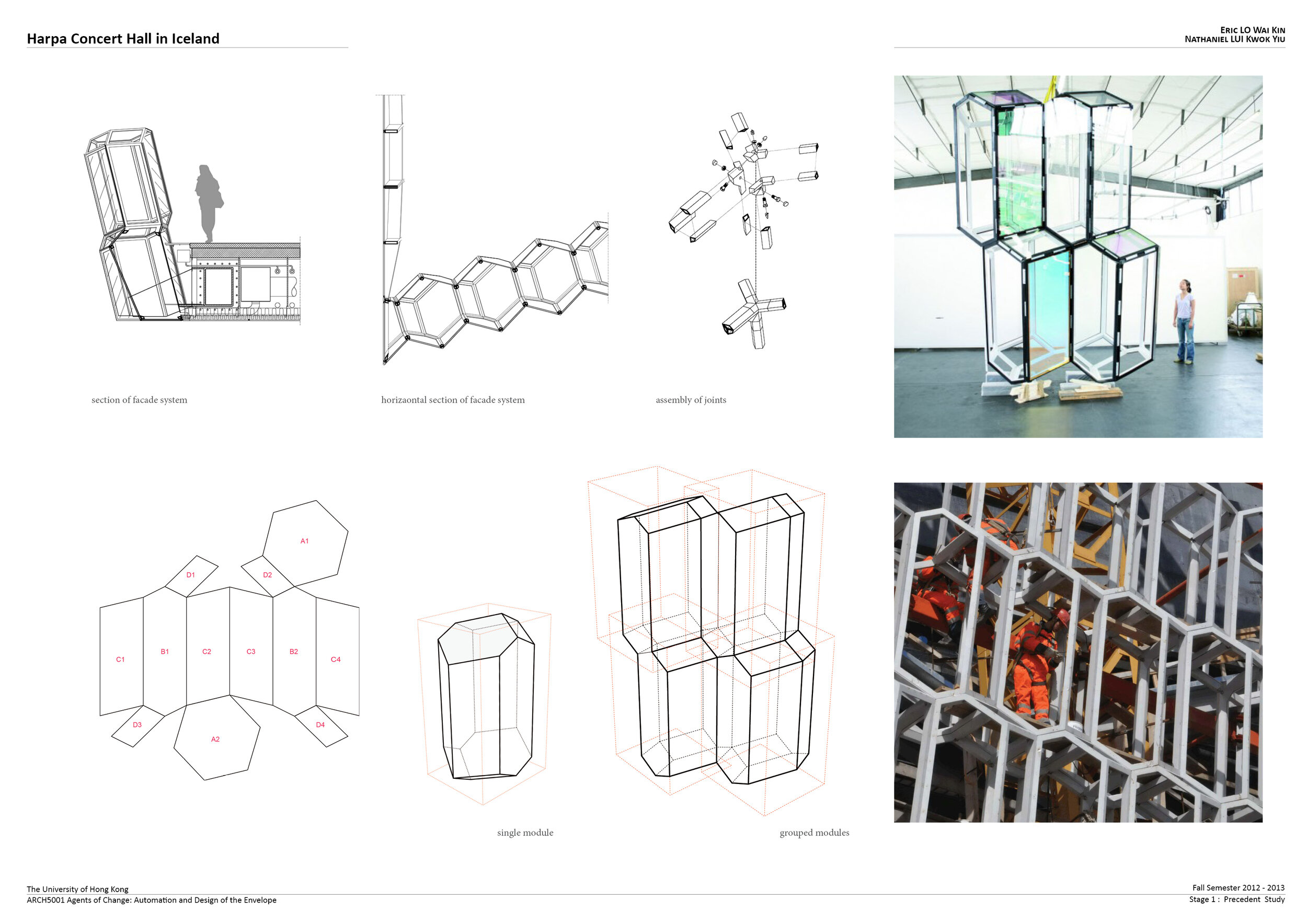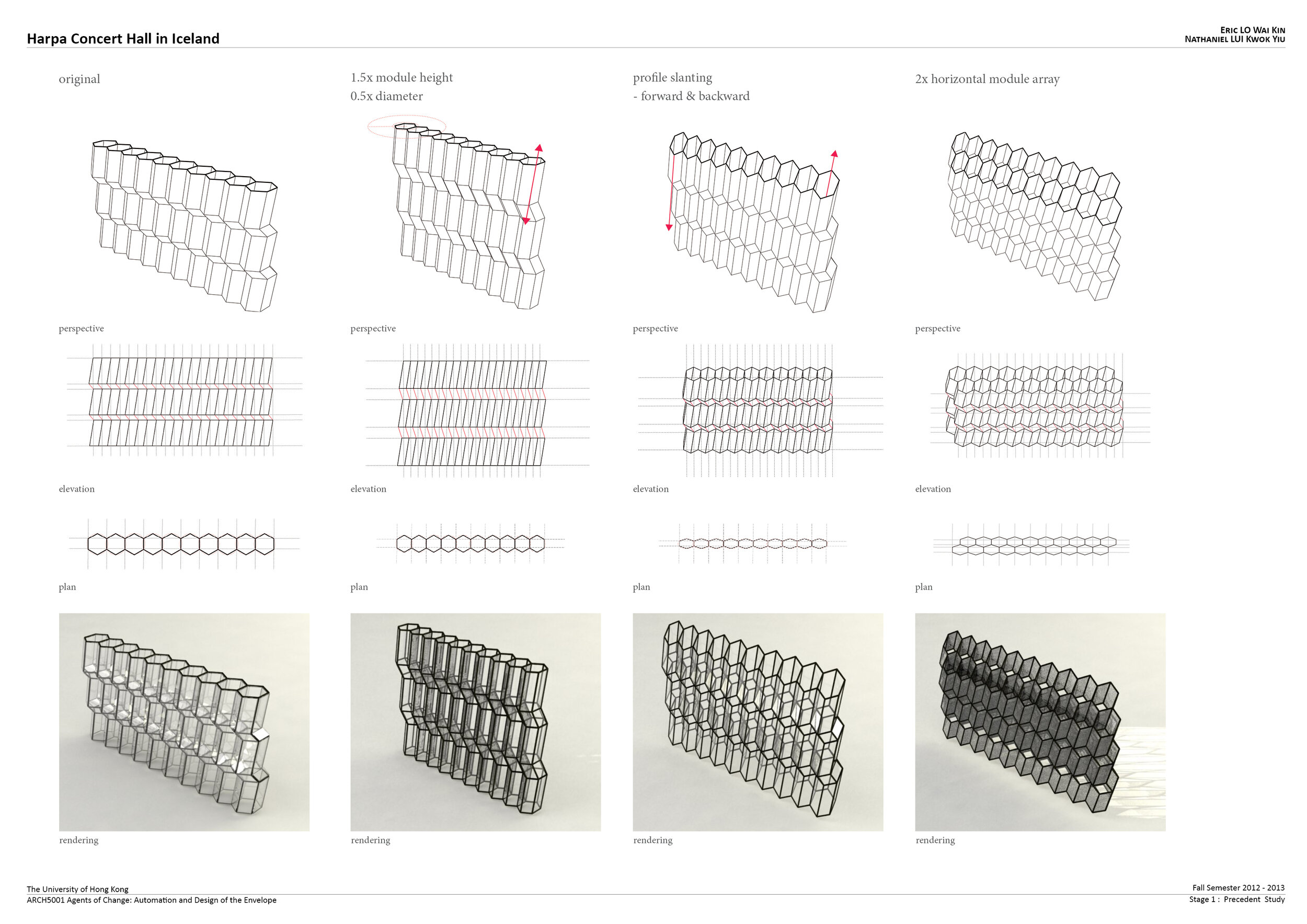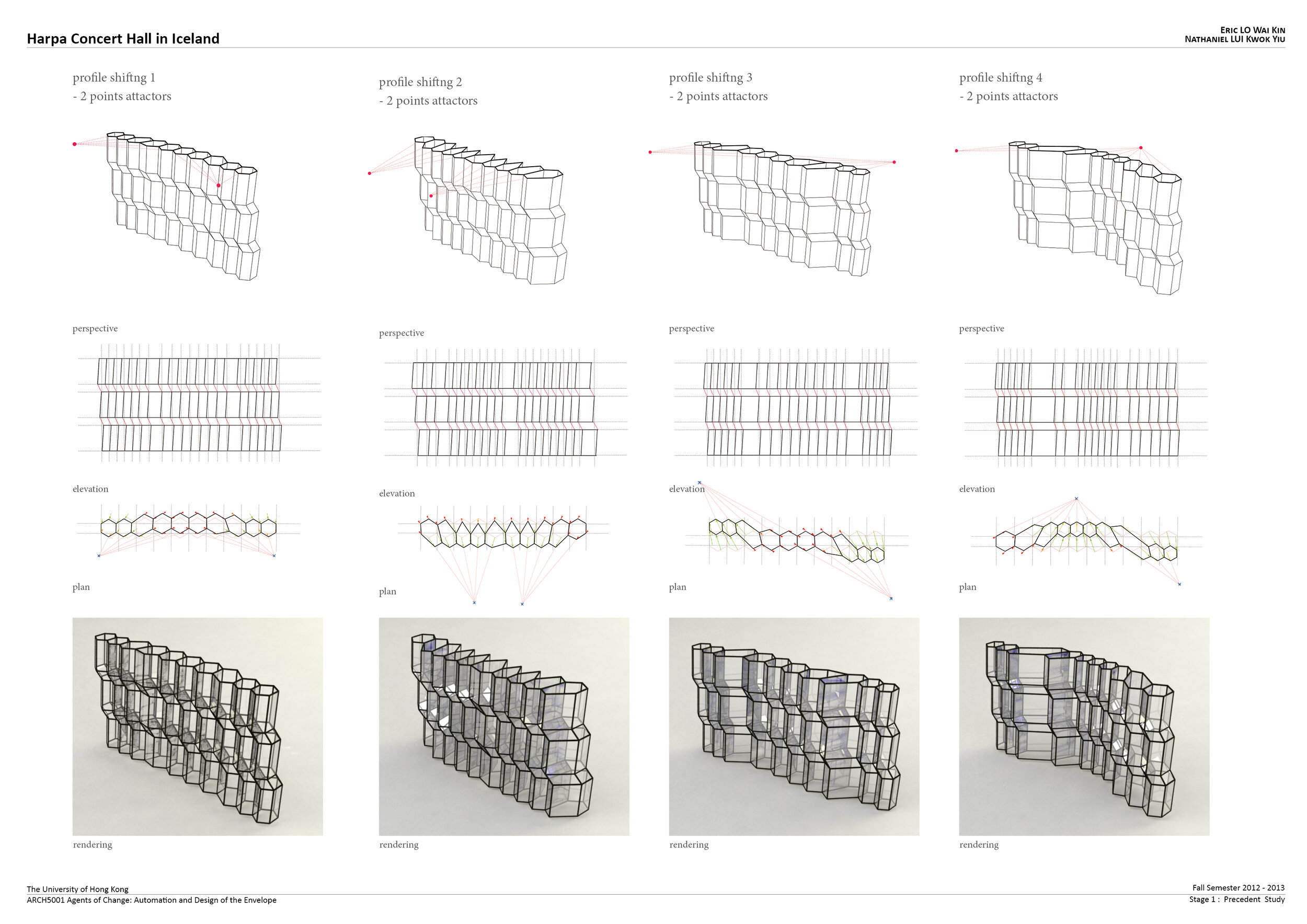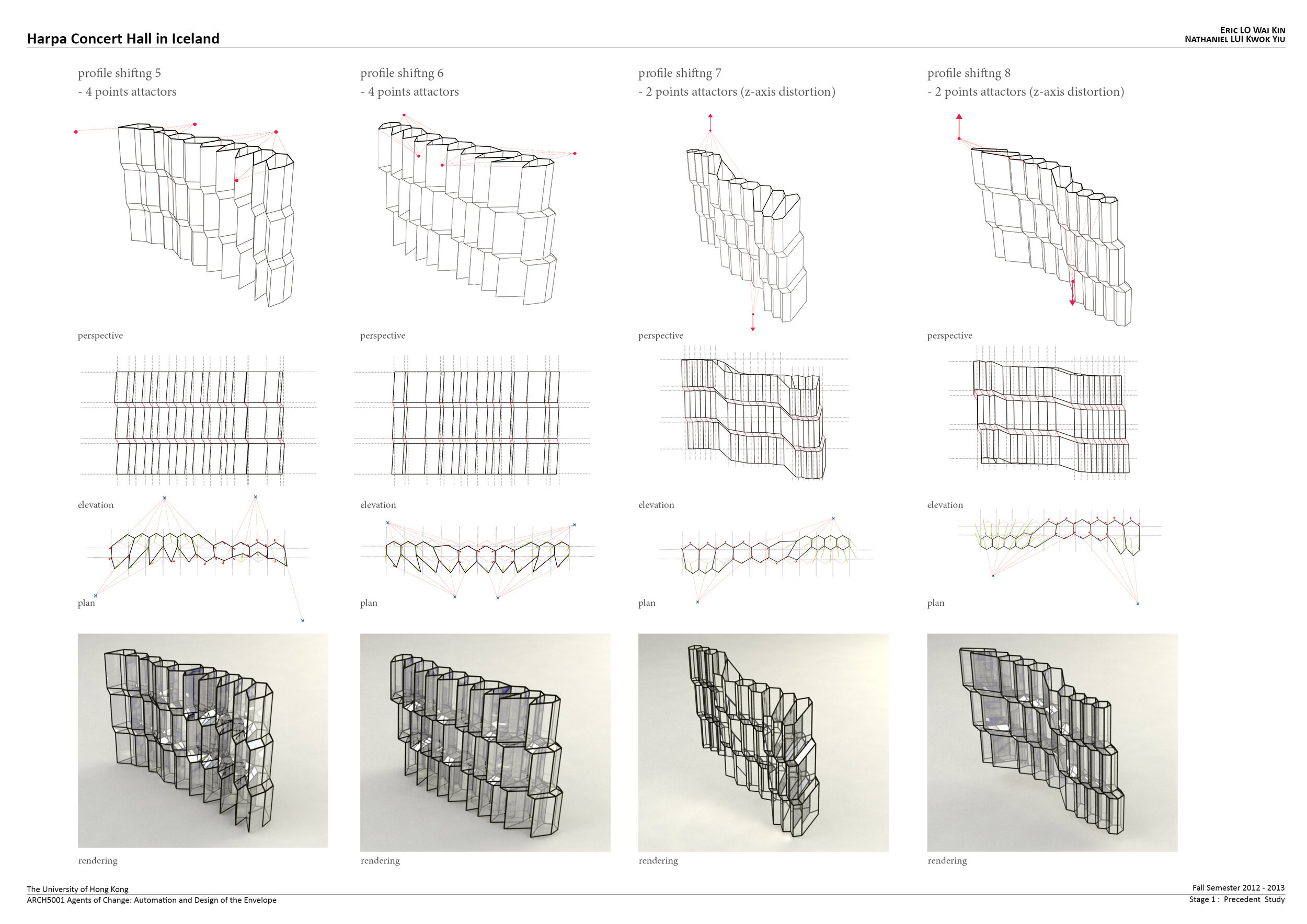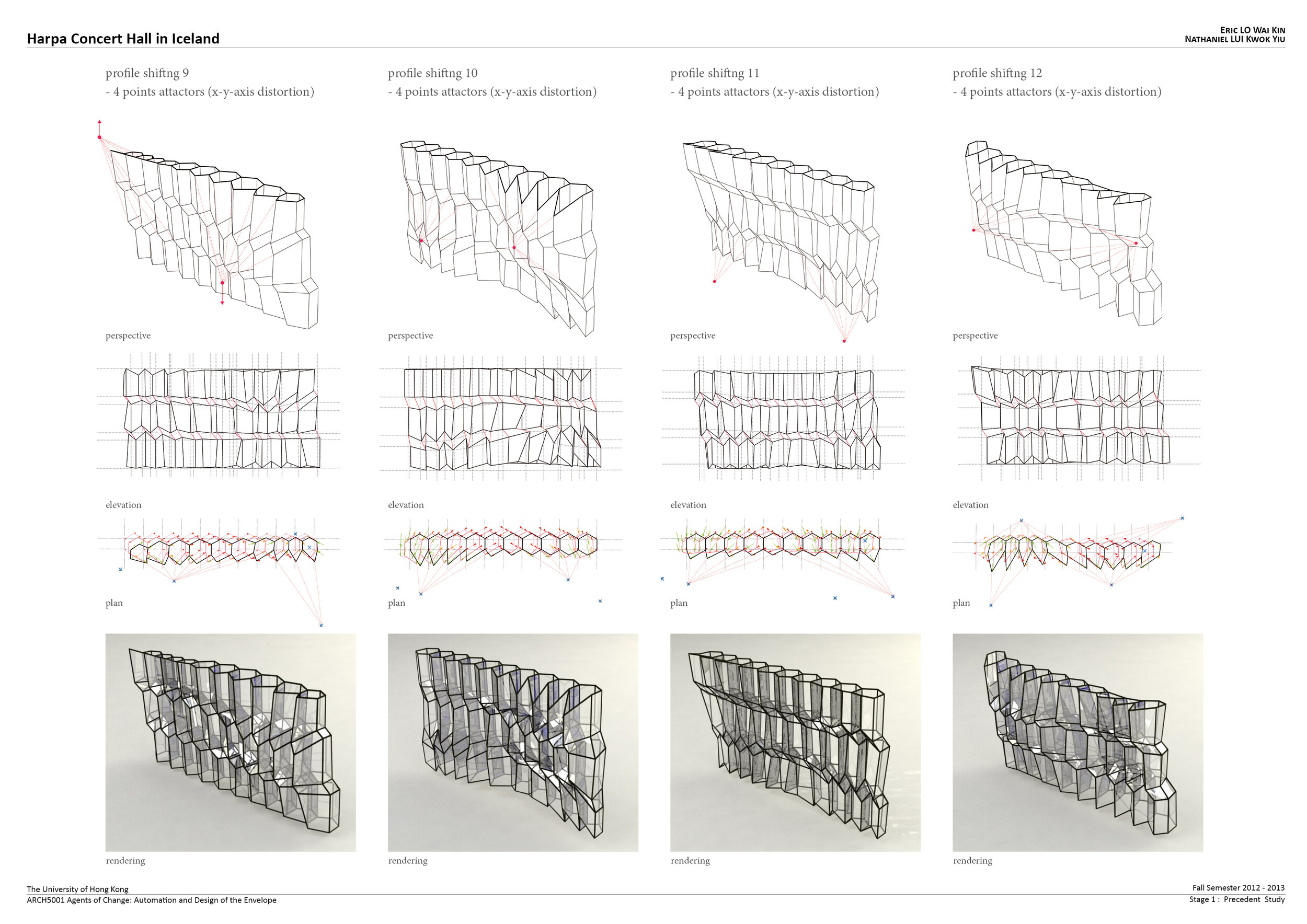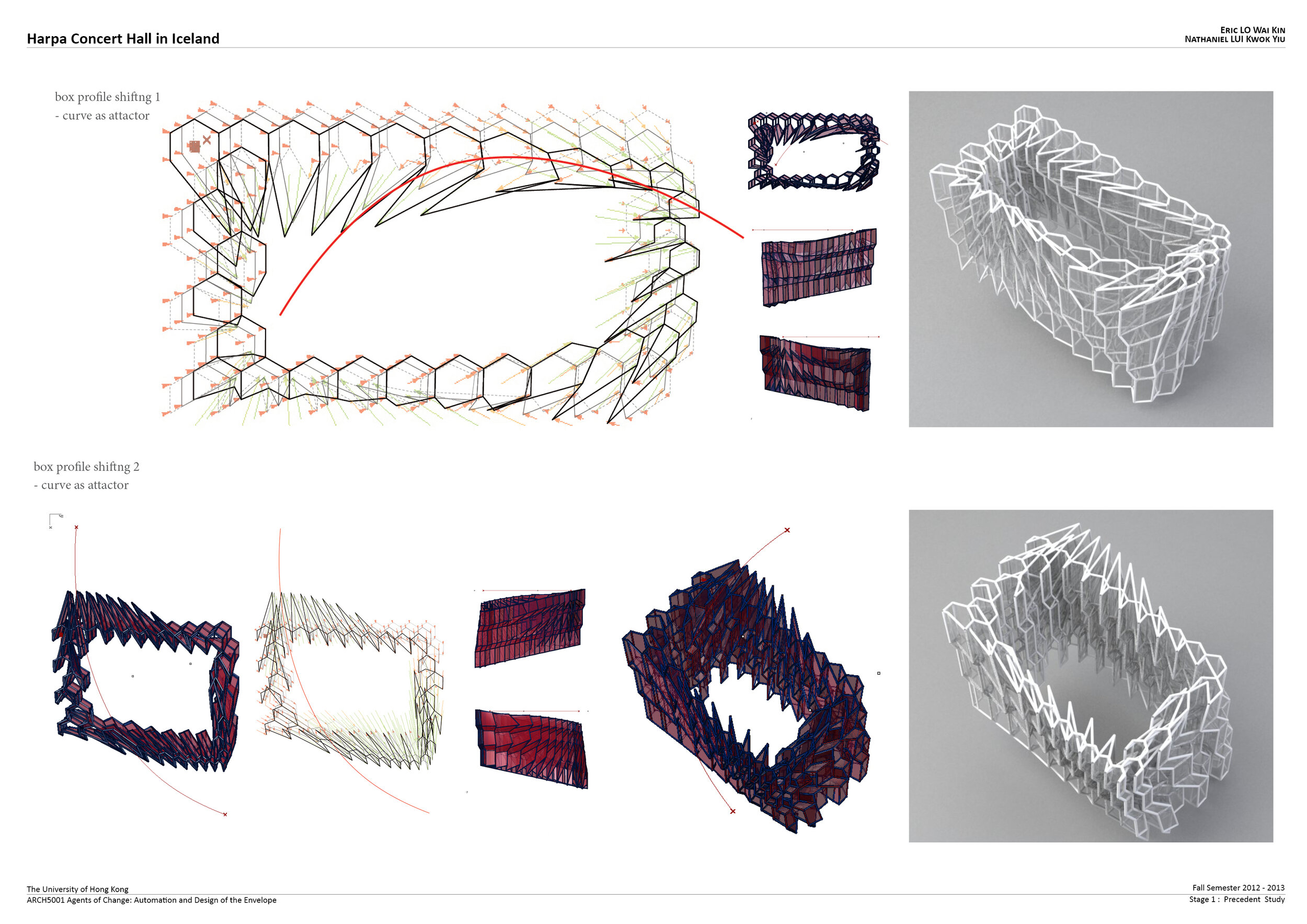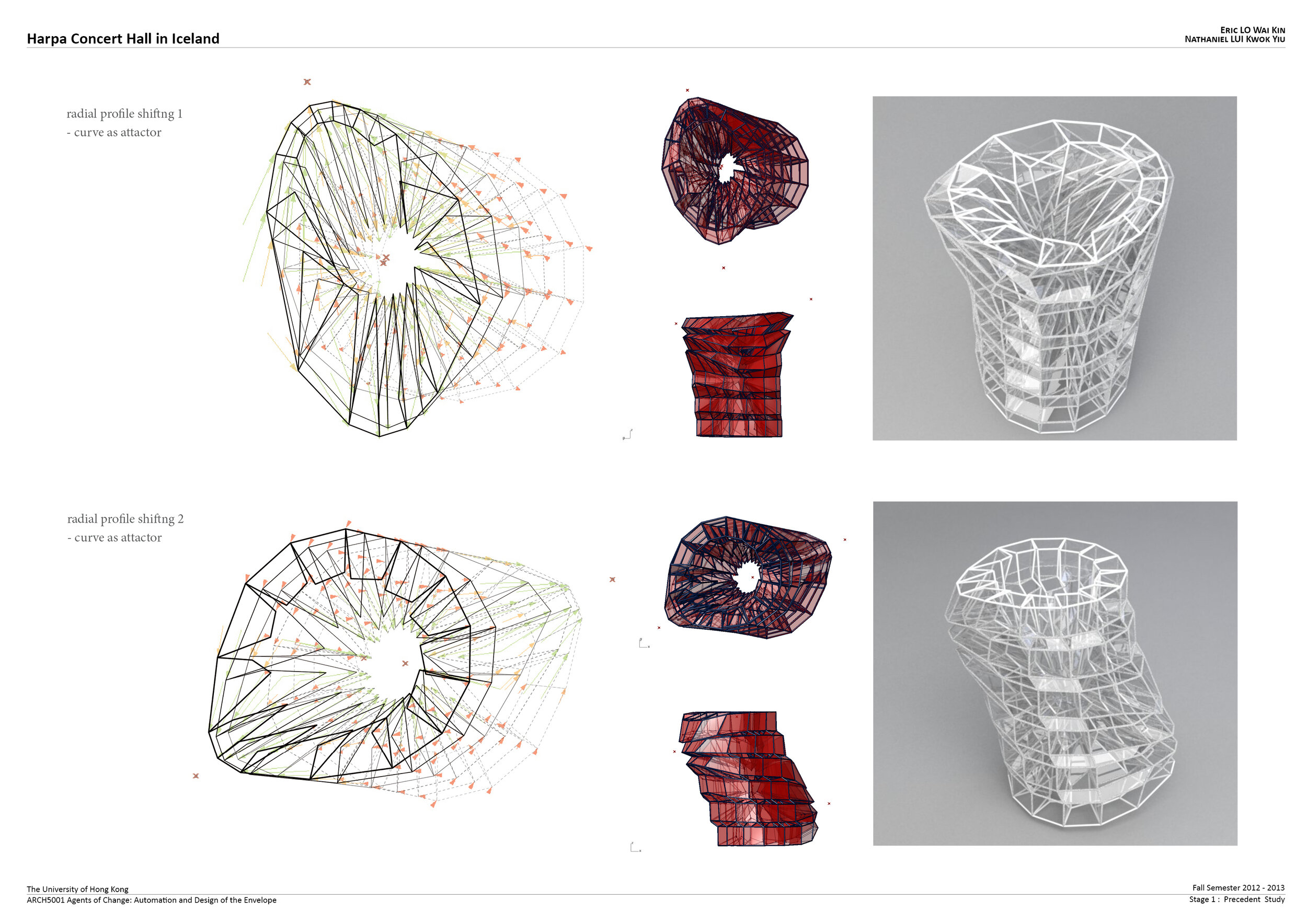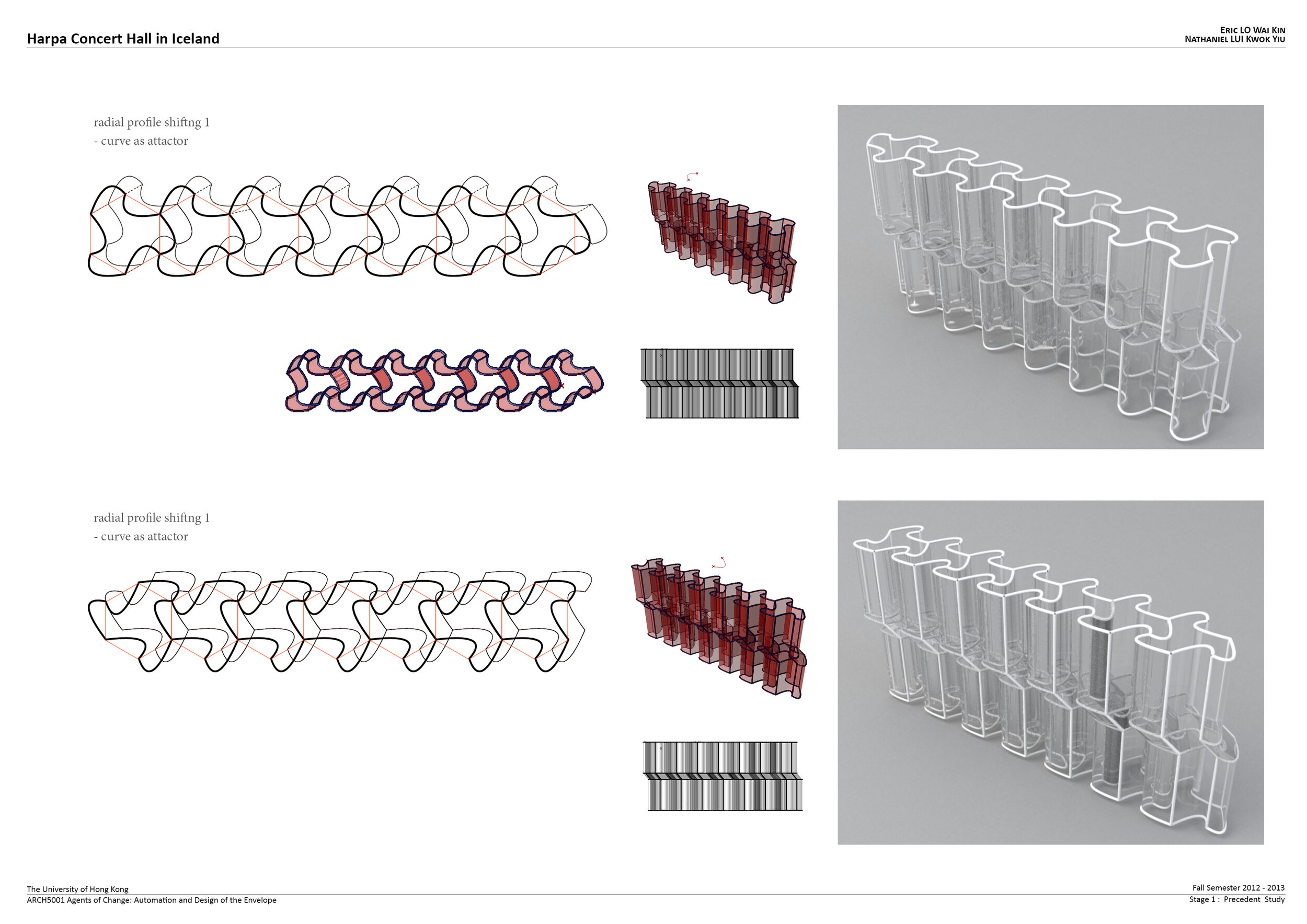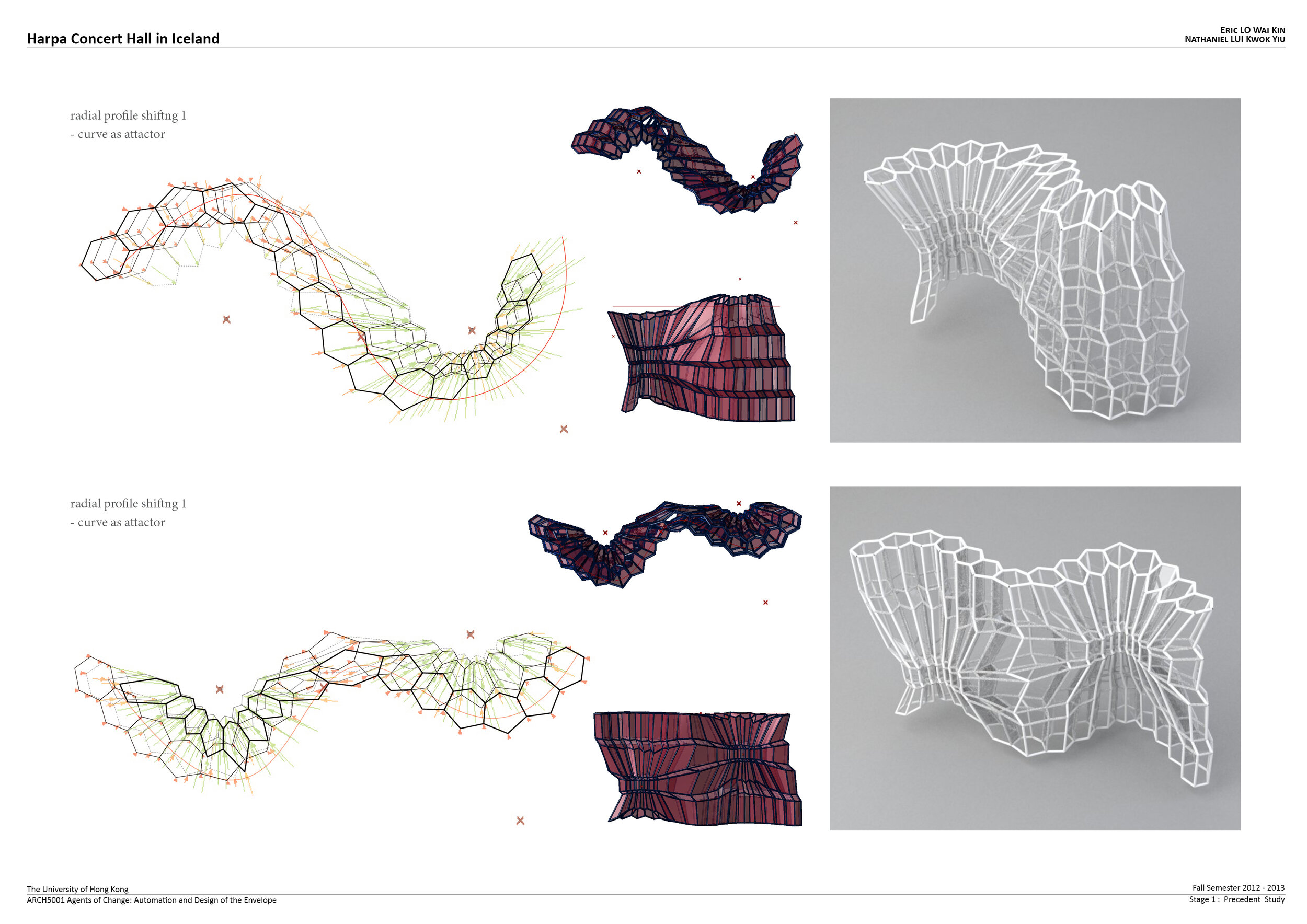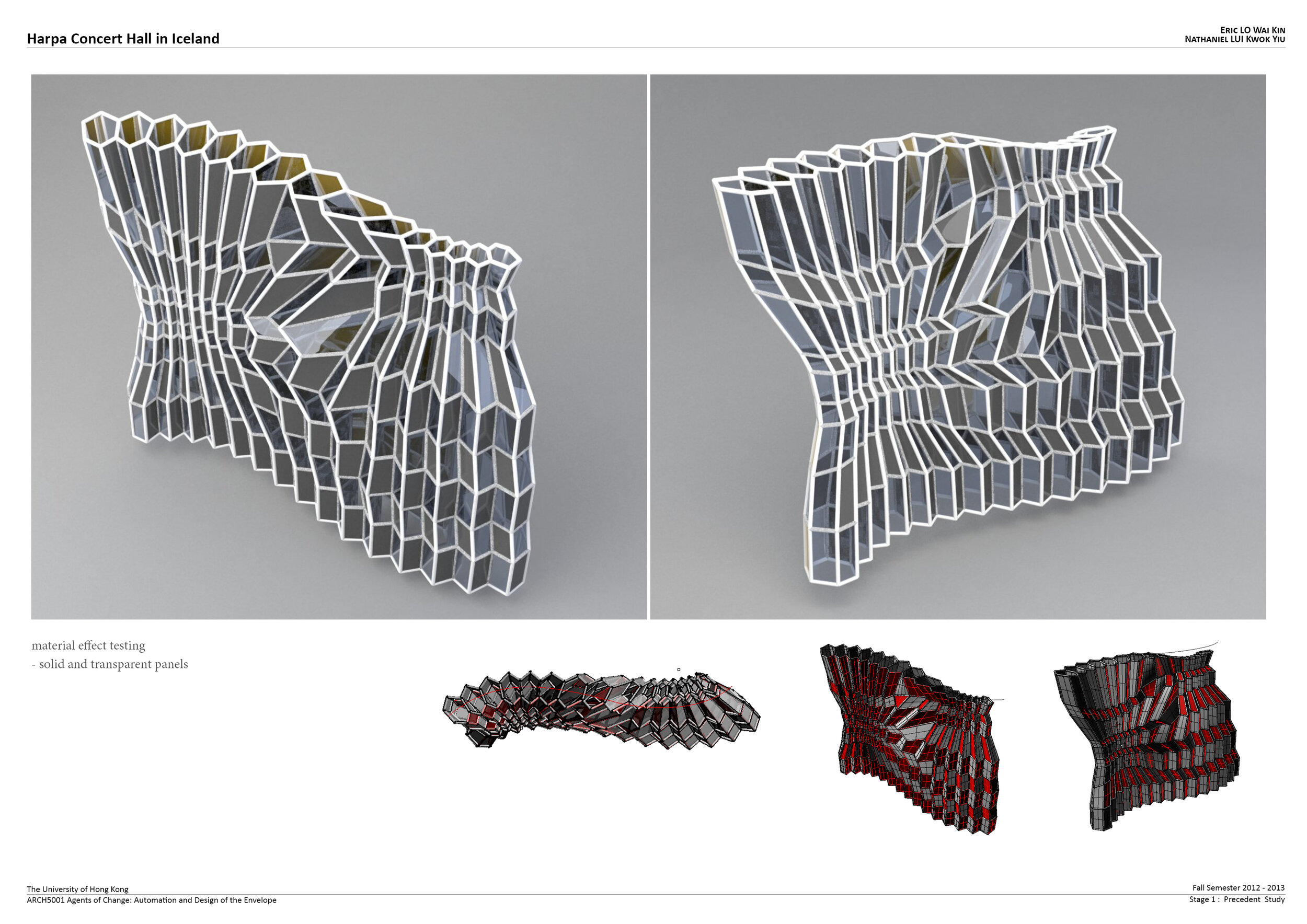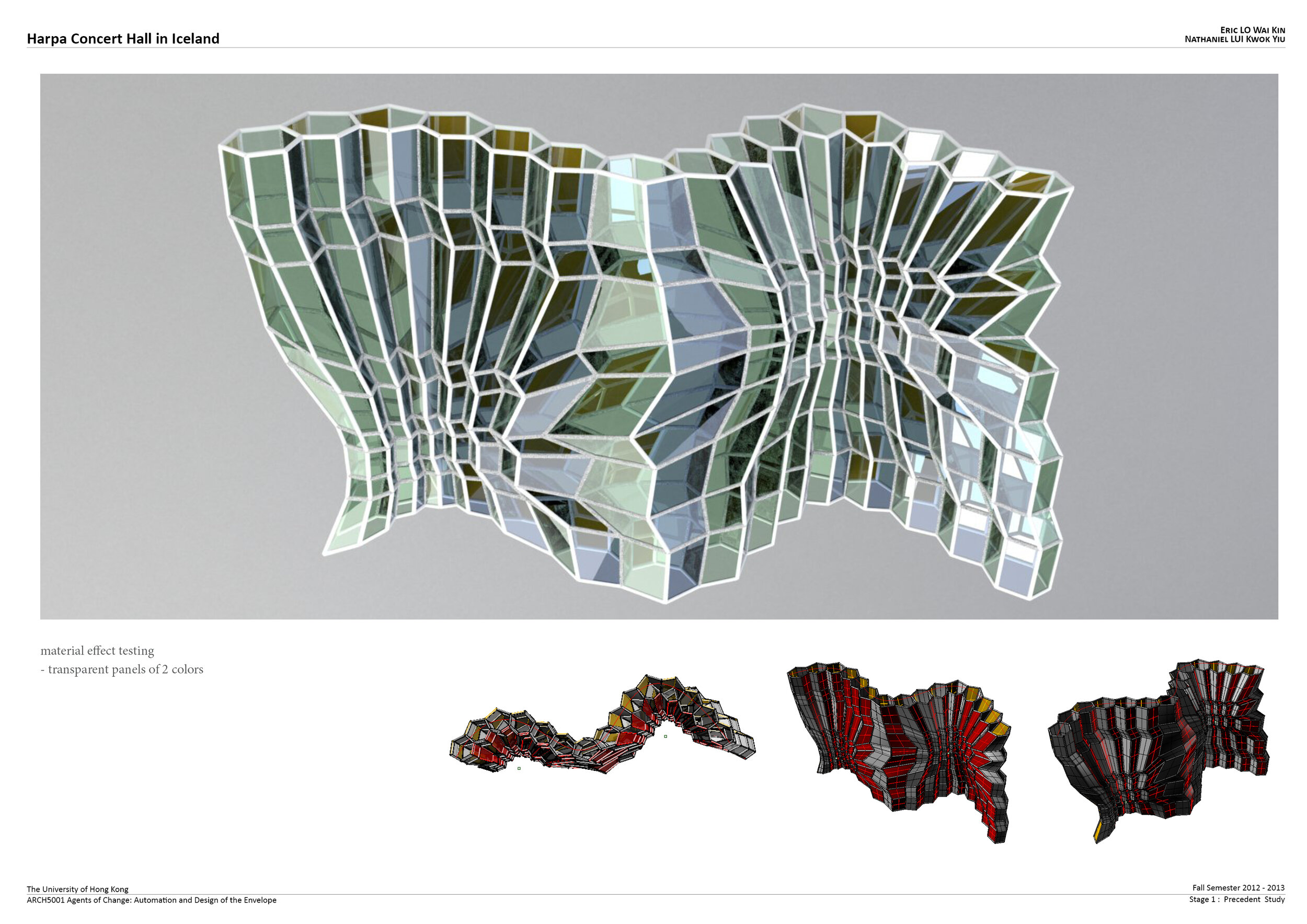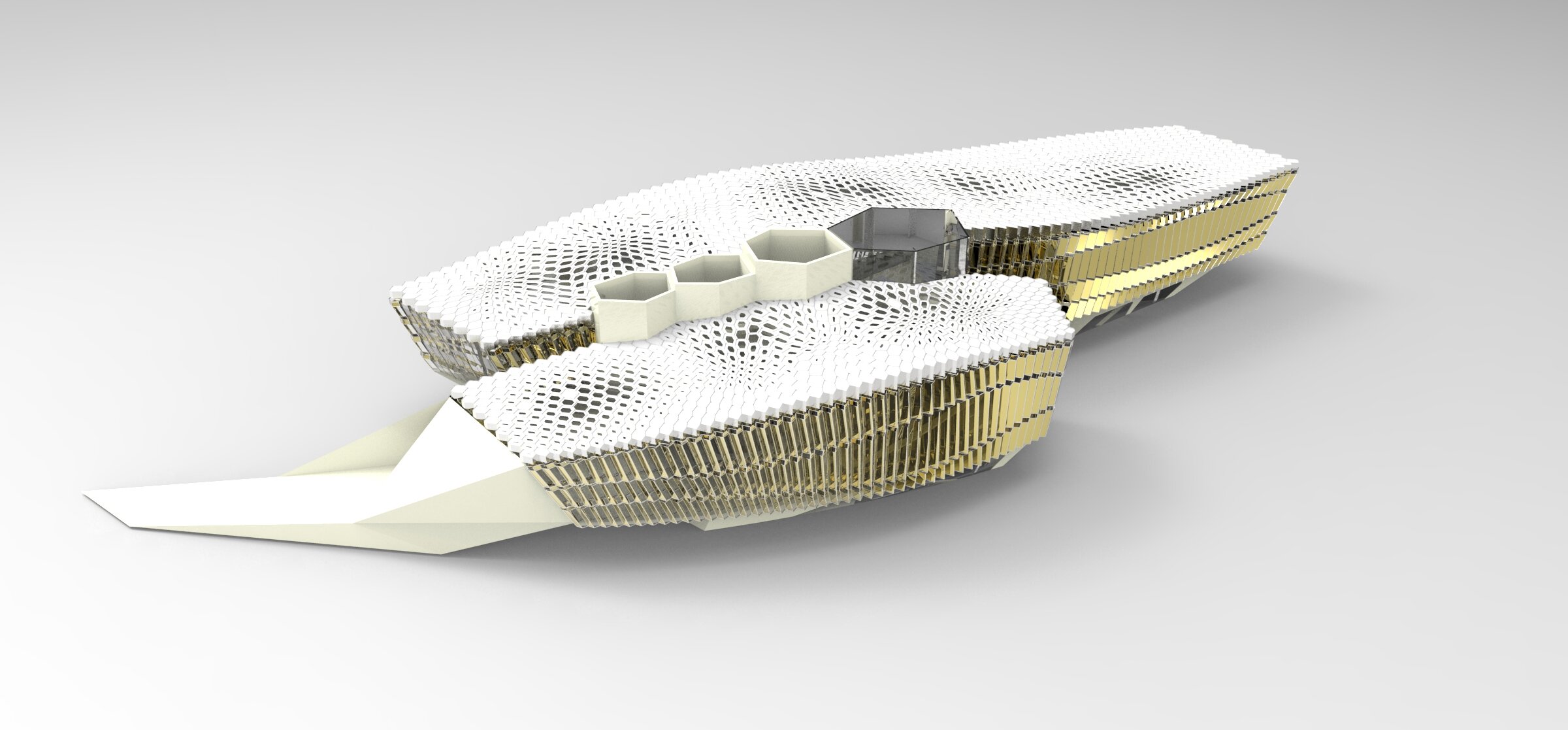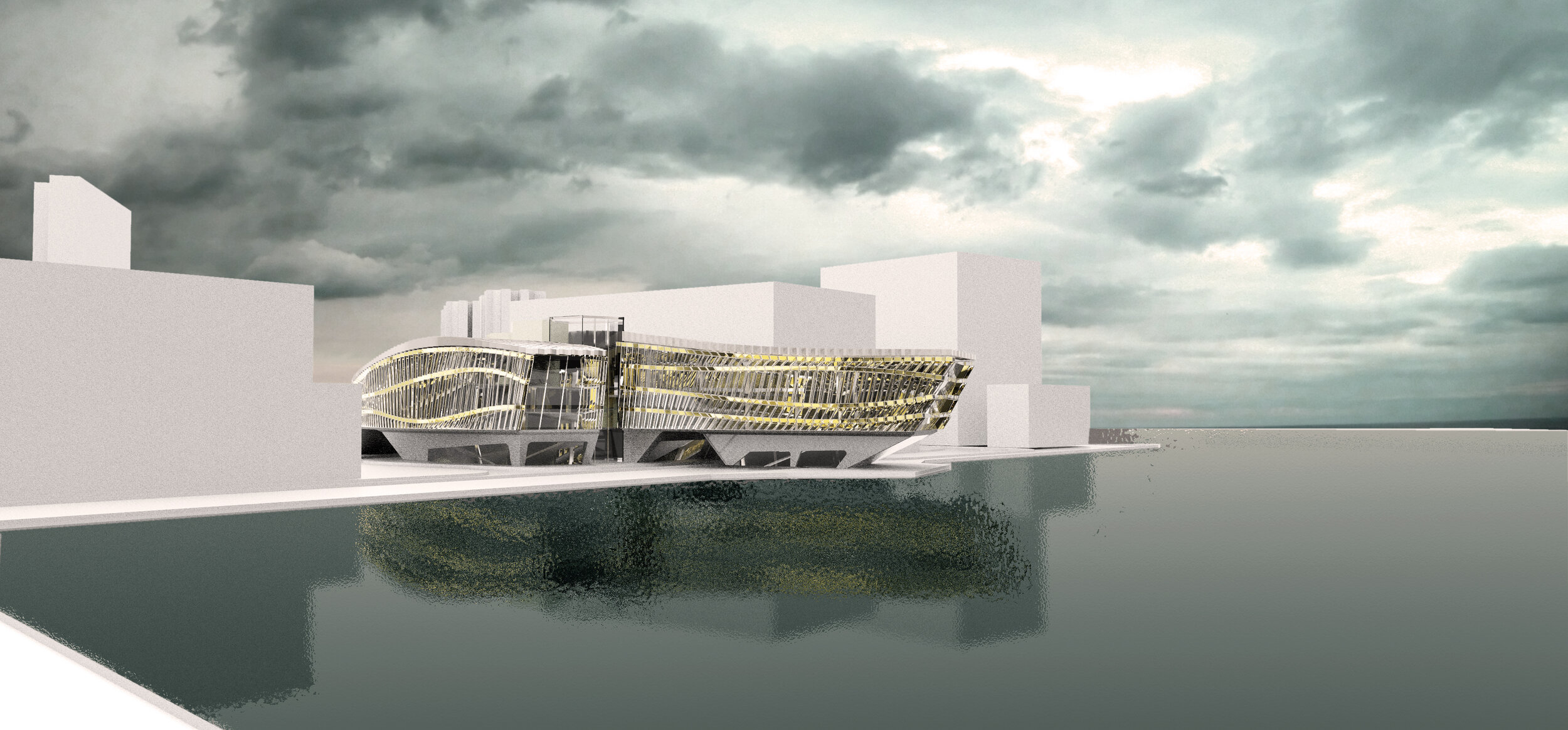
Hexeum
Explorative Studio Project
University of Hong Kong
Design Team: Eric Lo, Nathaniel Lui
2012
The purpose of the Hexeum project was to analyze the geometric properties of Harpa Concert Hall’s facade and to push it to new heights using Grasshopper3D scripting methods. After recreating the original geometry, it quickly became clear that the facade was a simple pattern of repeating one-directional hexagonal prisms. Like the basalt rocks it was based on, the facade is inherently structural due to its hexagonal grid composition. For this reason, the facade was able to be developed further by distorting the original grid in different ways while still retaining its structural capacities.
Methodology
First, the grid was simply distorted using point attractors. After developing the script further, the grid itself was able to evolve from a 1-dimensional system to a 2-dimensional system (the Box and Radial grids.) At the peak of development, a customized grid could be generated from any curve, resulting in a highly flexible - yet still structural - geometric system. Each individual “agent” i.e. each hexagonal prism would follow the universal rules of distortion set by the script, changing and adapting to any given input situation. Since the grid itself is flexible, the thickness of the facade itself could be controlled directly as well, providing true customization to the amount of air stored inside each agent. This becomes a vital component in specifying insulation properties that each hexagonal cell could potentially provide.
